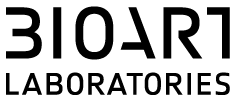This year’s winners were selected out of a long list of 120 proposals by artists and designers from all over the world, who responded to the Open Call at the beginning of 2022. This long list was reduced to a short list of eleven contestants who, after a careful match making, got the opportunity to write a joint proposal together with a scientist/researcher connected to a prominent Dutch research institute. Working as a team, the artists and scientists presented their plans during a full day of pitches for and Q&A’s with this year’s independent jury consisting of writer/curator William Myers (chair), cultural visionary and Arts at CERN initiator Ariane Koek, professor of materials innovation and design at TU Delft and CARADT Elvin Karana, NTR science editor-in-chief Gerda Bosman, writer/sociologist Ruben Jacobs, and previous BAD Award winners Emma van der Leest, biodesigner and founder of Blue City Lab, and Zackery Denfeld, bio artist and founder of The Center for Genomic Gastronomy. The jury noticed some common grounds between several projects. Contesting the state of the binary was one that stood out clearly. This was done by rejecting borders, biases, and even the concept of alienness in favor of fluidity and multiplicity. ‘Another noticeable feature was the number of proposals that utilize AI and computation as a tool or, even further, as a collaborator. This trend, as well as technologies from the Life Sciences such as CRISPR cas-9, are demonstrating new aesthetic possibilities, and inviting informed critique’, according to Myers. |


